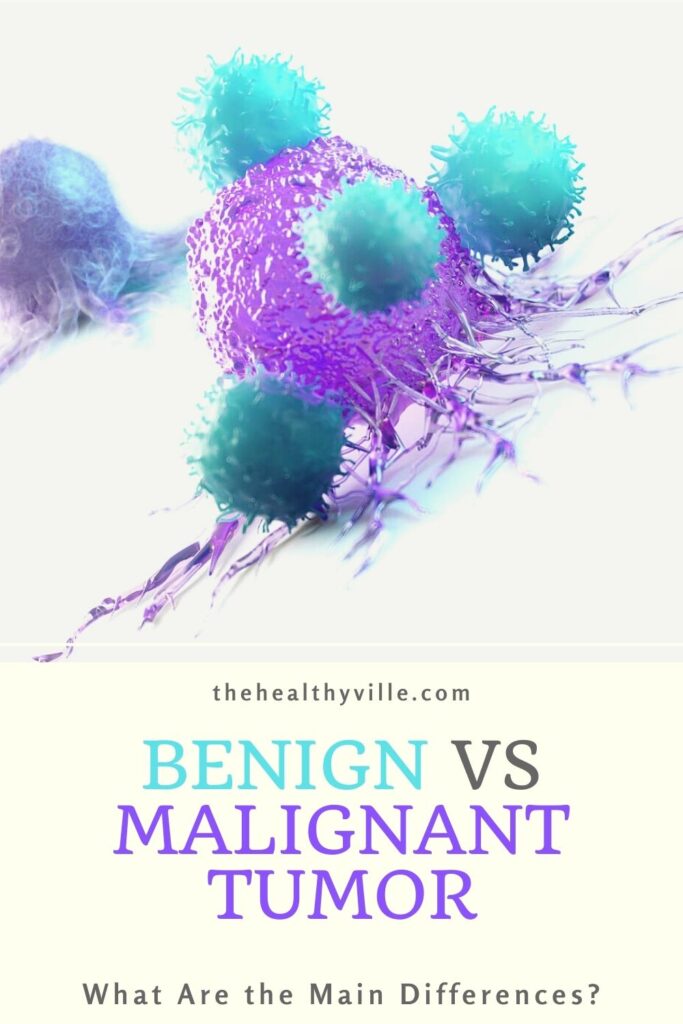Benign vs malignant tumor – what is the difference really? We are all concerned about it, especially when the doctor suspects something. Learn everything you need to know!
Malignant tumors, as you may as well know, have ability to spread to other parts of the body through the metastasis process.
When the doctor starts suspecting that you have tumor, your first thought is: Please, don’t let it be a malignant one! That’s because malignant tumor or cancer is one of the main problems in medicine to this day, and unfortunately, rarely anyone survives it.
However, we must be aware that not all tumors are cancer. A tumor is defined as a set of cells from any tissue in the body, which have multiplied in an uncontrolled way and have given rise to an abnormal mass.
Due to the importance of the problem, in this article we explain the main differences between a malignant tumor and a benign one.
Benign vs Malignant Tumor – Main Differences
Both a malignant tumor and a benign one are pathologies that must be studied extensively by a group of doctors. In the same way, treatments are usually established for both. This is done in order to avoid possible complications or further problems later.
What mainly differentiates a malignant tumor from a benign one is the extension. In both types, cells multiply uncontrollably. However, in benign tumors, they do not spread to other parts of the body.
As a general rule, the benign ones are not life threatening. But this has a nuance, since when they grow too large and press on nearby organs, can affect these organs. The tumor needs a removal in that case.
In a malignant tumor, cells do have the ability to spread to other areas of the body. In fact, they also tend to grow in these areas: this phenomenon is called metastasis. The spread can occur both by contiguity, by blood or by the lymphatic system.
That way, this dangerous tumor usually causes other smaller tumors in different parts of the body. Benign tumors do not usually spread because in them, the cells are surrounded by a membrane or capsule that contains them.
Metastasis
Another aspect that allows distinguishing between a malignant and benign tumor is the differentiation. Meaning, how much tumor cells resemble those of the original tumor tissue:
In a malignant tumor, the cells look little or little like the original ones. This allows you to establish grades for staging the cancer.
However, in benign cells, the cells do resemble those of healthy tissue.
It is also important to know that a benign tumor usually grows more slowly than a malignant one. They can even interrupt their growth; in the wicked, however, this does not occur.
How do doctors diagnose a tumor?
The earlier a tumor is diagnosed, the more likely it is to find an effective treatment. Therefore, it is necessary to raise awareness. Self-examining for lumps or abnormalities is one of the main measures, although we should not fall into the obsession.
Seeing your doctor is paramount. From a certain age, it is advisable to undergo general check-ups on a regular basis. These types of measures make up the screening methods and allow the early detection of tumors. For example:
- In women it is very important to perform mammograms to rule out the existence of a breast tumor.
- For men, recommendations are to examine the prostate by digital rectal examination.
In addition to early detection, there are other techniques that allow diagnosing a tumor when it is more advanced. Imaging tests, such as computed tomography, allow us to know the location and size of the tumor. Doctors also use magnetic resonance imaging.
However, the only way to study tumors in a concrete way is the biopsy, which allows to study a fragment of the tumor. Through microscopy, doctors observe the behavior of your cells. Thus, doctors still don’t know what is its degree of differentiation and its rate of proliferation.
Treatment of a benign or malignant tumor
Treatment depends on the type of tumor, its location, its extension, and so on. Doctors can remove most benign with surgery. They do not usually need radiation therapy or chemotherapy.
On the other hand, the treatment of the malignant is usually more complex. Most combine surgery with cycles of radiation therapy or chemotherapy, even both. This is in order to ensure the elimination of malignant cells in any part of the body.
Before any tumor, the most important thing is to carry out an early detection. This will allow a more effective treatment. It is important since, although the benign ones are not directly life-threatening, you can avoid possible later complications.
Don’t forget to SHARE what you know about benign vs malignant tumor with your friends and family on your social networks!

